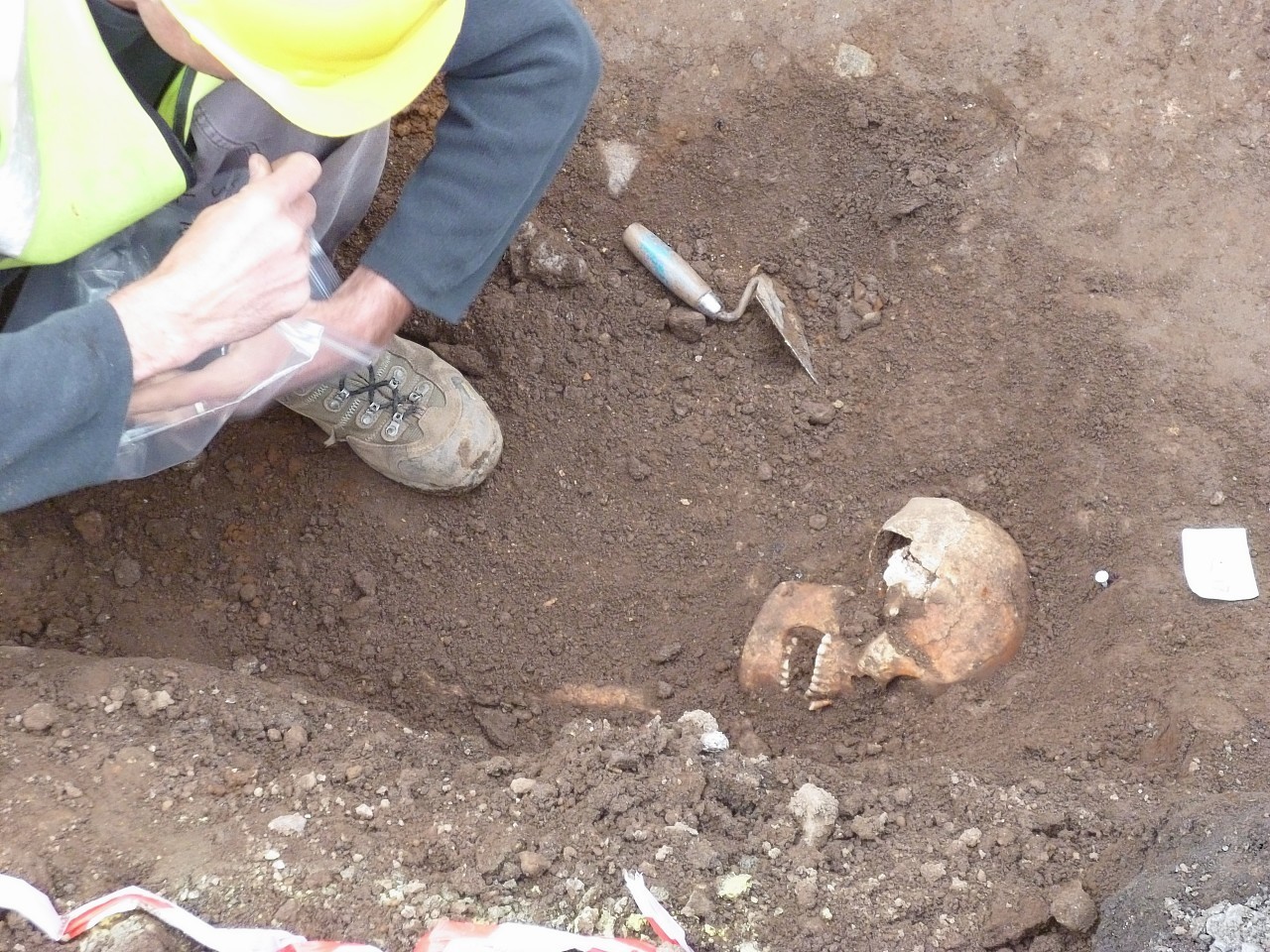More than 20 medieval skeletons discovered by unsuspecting workmen in the centre of Aberdeen are being examined by experts with a view to being reburied.
Contractors from CHAP construction and SSE made the shock find while they were undertaking utility works for a new boiler plant for an administration building at Robert Gordon University’s (RGU) Schoolhill campus.
The 25 sets of human remains were just inches beneath the neighbouring quad, belonging to top city private school Robert Gordon College.
It is believed the skeletons are those of people laid to rest on the site of the former Blackfriars Abbey during the 13th century.
The Dominican abbey was founded between 1230 and 1249, purportedly by Alexander II, but was destroyed by reformers in 1560.
It was granted to George, Earl Marischal in May 1587 and went on to become the Schoolhill site for the college after being opened in 1750.
In 2009, workmen uncovered wall foundations during resurfacing in the quadrangle in front of Robert Gordon’s College.
They also found glazed ceramic floor tiles, window glass, mediaeval pottery and a small pit filled with human bones.
As Aberdeen City Council does not currently employ an archaeologist, regional archaeologist for Moray, Aberdeenshire, Angus and Aberdeen City councils, Bruce Mann, was drafted in to help advise north-east firm Cameron Archaeology on the dig.
Mr Mann said more information on the historic find would emerge in the next week and the bodies would be reburied.
Under his Twitter title, @diggerman17, he wrote: “Details of the #Aberdeen medieval graves discovery will come out officially next week. The skeletons, being examined now, will be reburied.”
He previously wrote: “I can confirm that part of the 13th century Dominican abbey & graveyard have been found in #Aberdeen during utility works in last two weeks.”
A spokeswoman for RGU confirmed its role in the discovery.
She said: “During excavation work that was being carried out at our Schoolhill campus to install a new boiler plant, a number of skeletons were discovered on the site.
“As a result, we have been working closely with the archaeology team at Aberdeenshire Council to progress the work in accordance with their guidance.”
